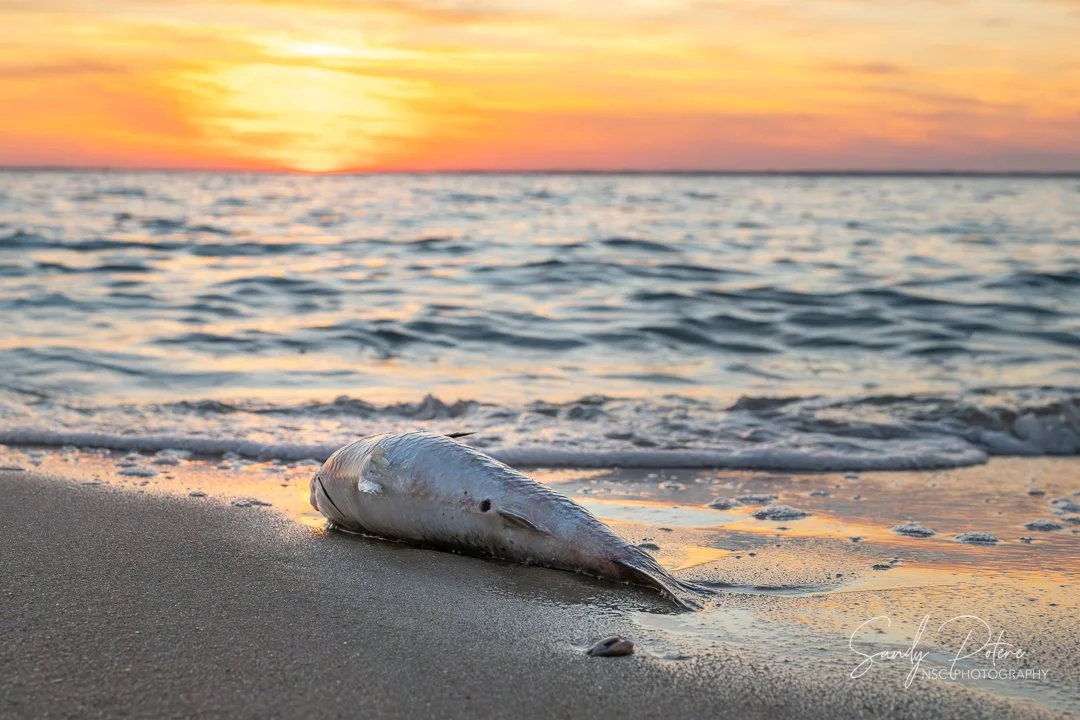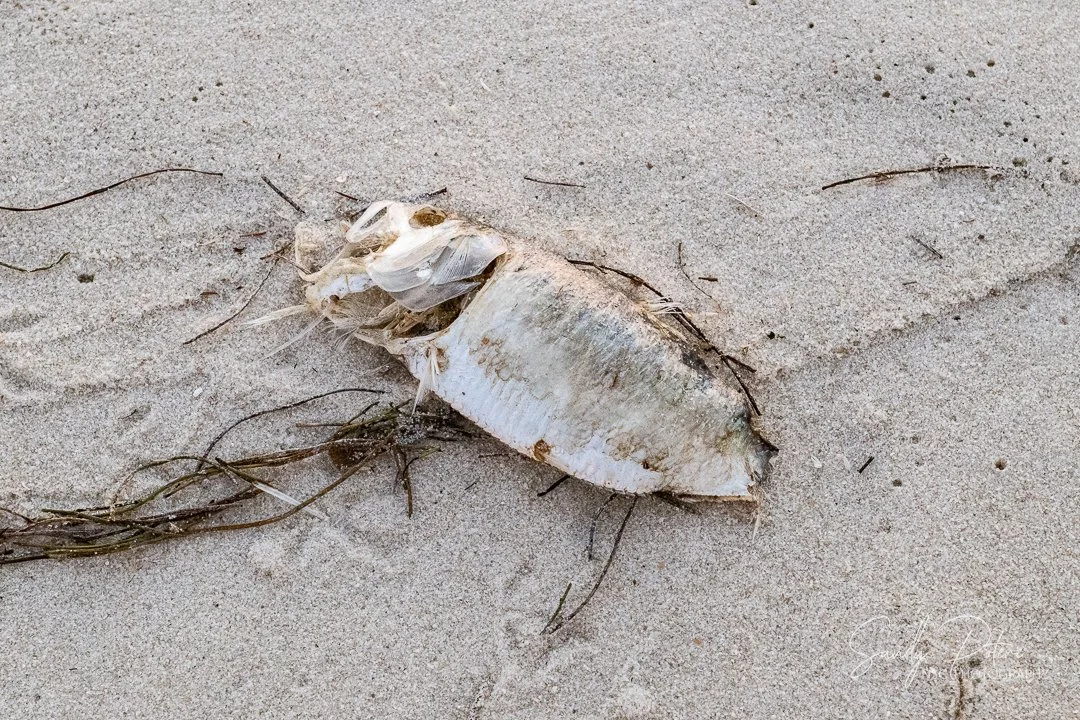Red Tide in St. Joseph’s Bay
Yesterday afternoon I walked down to the beach, hoping the Red Tide had finally eased up. It’s been hanging around for months now, and I thought maybe—just maybe—the air would be clear. Red Tide has never bothered my respiratory system before, but after less than a minute on the sand, my throat started burning. I couldn’t stop coughing. Even Mishka knew something was off; she immediately turned back toward the boardwalk, wanting to leave.
This is the part no one tells you as a tourist.
The brochures show sunsets, dolphins, white sand, and clear water… but they don’t tell you what it’s like when Red Tide hits. And this year, it hasn’t stopped. It’s been relentless.
For months now, St. Joseph Bay has been full of dead fish—every tide brings in more. Entire schools of mullet, pinfish, trout… all washed up. And now Lake Wimico is seeing the same: fish kills, believed to be tied to Red Tide – Karenia brevis.
And here’s the part that shocks people the most:
the water looks absolutely beautiful right now.
It’s crystal clear, calm, and that perfect Florida blue that makes you want to jump in. It looks healthy. It looks clean. But Red Tide doesn’t always turn the water brown or murky. Sometimes it hides in water that looks like a postcard. You can be standing in the prettiest water of the entire year… and still be coughing because the toxins are in the air.
A little history they don’t talk about
Red Tide isn’t new. Florida has documented blooms as far back as the 1840s. Early sailors wrote about “rust-colored water” and fish dying in such huge numbers that the stench carried for miles. So yes—Red Tide is natural. It always has been.
But what fuels it now is very different.
Back then, our coastline wasn’t packed with homes. There weren’t thousands of fertilized lawns draining into the Gulf. There weren’t stormwater systems overflowing every time it rained. And there definitely weren’t sewage spills.
The part that’s hard to hear
People love to say, “It’s natural, nothing we can do.” But living here teaches you the truth:
Yes, Red Tide is natural—
but the reason it lasts this long, spreads this far, and gets this strong is anything but natural.
A sewage spill in Highland View… stormwater runoff from rapid development… fertilizer washing off lawns and new construction sites… it all ends up feeding the bloom, making it worse, stronger, and longer-lasting. These are the things you don’t hear in relocation videos or real estate ads.
These are the things you only learn after you live here, breathe it in, and see beaches covered in dead fish instead of shells and talk with local biologists.
Where we go from here
I love this place. I really do. But I wish more people knew the reality—because the water can’t speak for itself, and it’s begging for help.
And honestly? I don’t know how to fix it. I read everything I can from BaySavers, and they’re doing the hard work of tracking, educating, and fighting for these waters. But the truth is, the bay needs more people paying attention. More people caring. More people willing to say, “This isn’t normal anymore.”
Florida is beautiful. But sometimes, the ugly truth is what needs to be seen the most.


